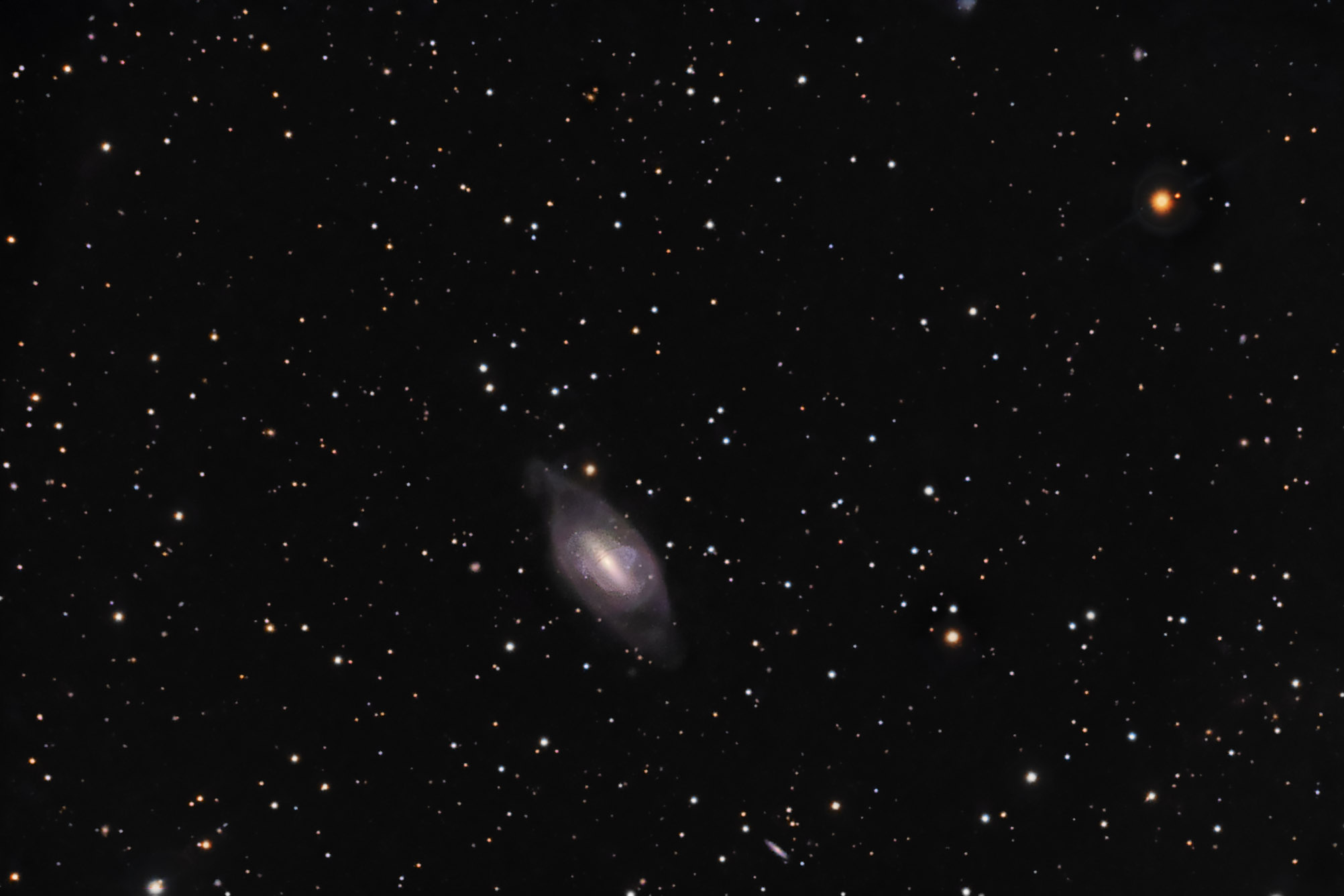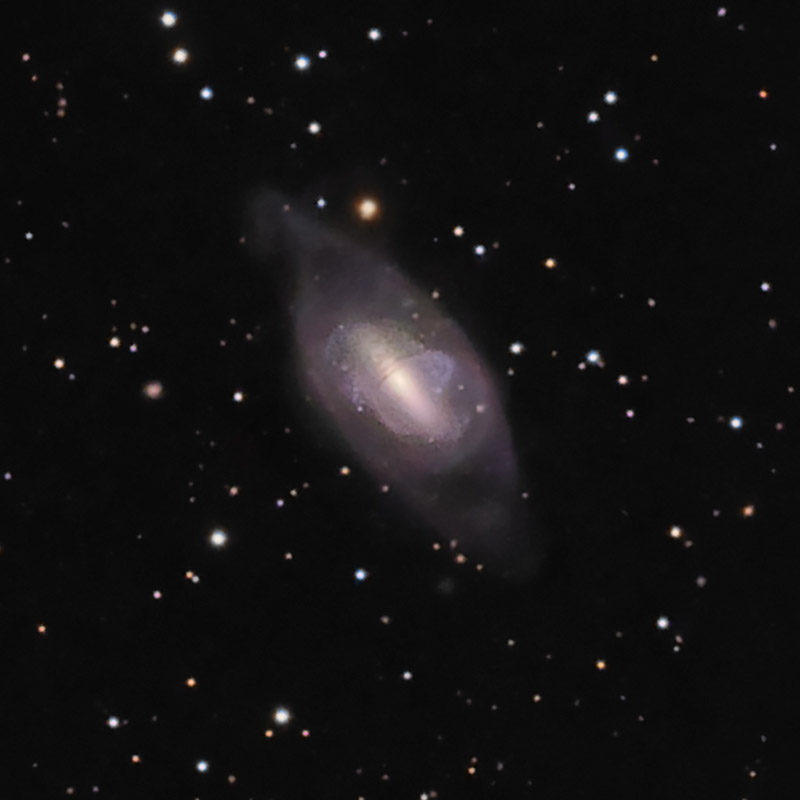| Description | Images |
Object name: ARP336Designation(s): ARP336, Arp 336/NGC 2685 is an example of a polar ring galaxy though that's hard to tell from its classification as (R)SB0+ pec. It is probably the result of the merger of two spiral galaxies that were oriented at right angles to each other, one winding up around the other. This is a very nearby object, being only about 45 million light-years away. It is sometimes called the Helix Galaxy as the remains of one of the spiral galaxies seem to spiral around the other galaxy. Where the helix structure passes in front of the other galaxy it is seen as a dark feature but where it is away from the other galaxy it is a bright feature. It is also known as NGC 2685 and is classed by Arp under his "Miscellaneous" category. This is for those few he cataloged that were one of a kind. At least as far as the 200" Palomar telescope could see at the time. There is another famous polar ring galaxy but it is too far south so wasn't on the survey plates Arp used to make his catalog. Hubble took a famous image of it ( https://www.spacetelescope.org/images/opo9916a/ ) but I can't find one of Arp 336 other than a raw image. I find that surprising. A photo from Kitt Peak is at: Related Designation(s):1XMM J085534.5+584405, 2MASS J08553470+5844039, 2MASX J08553474+5844038, 2XMM J085534.4+584404, 2XMMp J085534.6+584404, ARP 336, ARP336, CGCG 0851.7+5855, CGCG 288-012, Helix Galaxy, IRAS F08516+5855, LQAC 133+058 006, MCG +10-13-039, NGC 2685, NSA 135568, Pancake Galaxy, PGC 025065, PRC A-03, SDSS J085534.71+584403.8, SSTSL2 J085534.68+584404.0, UGC 04666, UZC J085534.6+584403, [GMM2009b] 12, [VCV2006] J085534.6+584404, |

